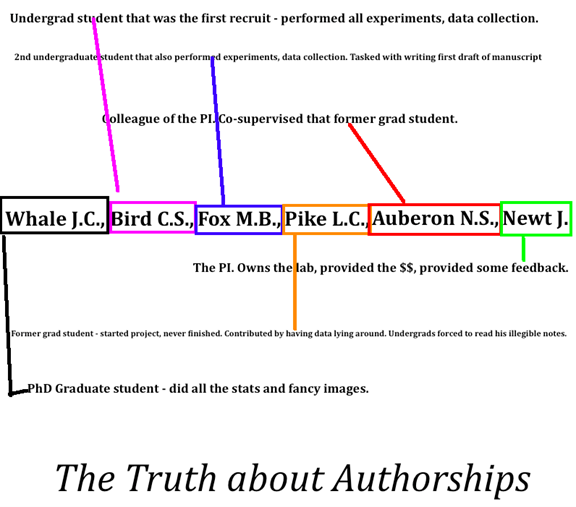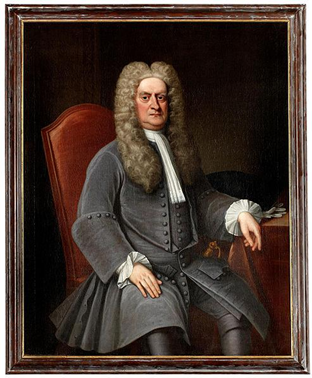“Give credit to whom credit due.” – Samuel Adams, 1777
This quote sound familiar? Perhaps all too memorable for some of you. The anxiety of being forgotten or the fear of missing out has plagued many looking for recognition and retribution. Even the likes of Samuel Adams, a 17th century, American revolutionary who led the infamous Boston Tea Party protest, and helped claimed Americas Independence, understood what it meant to be left feeling forgotten and unrecognized.
To consider the full measure of how important this notion of inclusion and recognition is, a biblical variant of Samuel Adams quote identifies the timelessness of this humanistic need:
“Render therefore to all their dues: tribute to whom tribute is due; custom to whom custom; fear to whom fear; honour to whom honour.” Romans 13:7
While not verbatim, the essence captured here mirrors the words of Samuel Adams.
Although many sympathize with these emotions, folks on the giving end tend to still give begrudgingly. The Oxford dictionary defines this idiom (i.e. S. Adams quote) as: “an expression that means you should praise someone who deserves it, although you might dislike some things about them”. Even with such interpretations in this modern age, we can still appreciate the honesty and the diplomacy required in building up the courage to render credit where credit is due. After all isn’t this the right and professional manner to behave?
Sadly the truth is that this lesson is still being learnt. In some cases, rightly so. In more formal settings and to a naïve audience, a student was once taught to always cite anything and everything that was borrowed – a quote, an idea, an image. All throughout those years of secondary and tertiary education, this simple rule of paying your dues was consistently engrained, though often hidden or numbed in light of the bigger, scarier beasts of plagiarism and academic misconduct. Students who have gone on to conduct graduate research and publish journal articles are probably the most familiar with this concept. In these murky waters, giving credit where credit is due is paramount – without doing so would make it impossible to write anything credible and/or publishable. It is a shame that the importance of academic integrity isn’t as prized nor widely applied when we enter the workforce.

In the real world, the rules are often vastly different – A generally pessimistic, yet accurate view, quickly recognizes that everyone is trapped in a vicious, rat race. Everyone fends for themselves, always tries to get out on top, and wants to be bigger, better, faster, and better looking. The weak are trampled and easily forgotten and credit owed is quickly turned into an I.O.U. (i.e. I OWN YOU). Even a reasonable amount of sucking-up-to, doesn’t get you far.
On the flipside, the more forgiving world promises credit when labours prove true. Rewards and expectations are clearly outlined and the pressure to deliver is on you. Not to say that this part of the world is free of people looking to take advantage of you or to cut queue – at the very least, the opportunities to claim what is rightfully yours is not out of reach nor out of question.

Copyright symbol. Picture credits: unknown
While there are now laws and patents to protect us from the vices of misplaced dues, the age of warnings or odes reminding you to give credit are over. Instead, be prepared to face outrageous lawsuits and threats to sue. Today this concept of giving credit is still proving a difficult learning curve for many. Stories of businesses firing core founders, (e.g. Steve Jobs from Apple), musicians stealing music (e.g. “Sorry” by Bieber and friends), and likes of the President Donald Trump seeking praise for his achievements since taking office, are all far too common.
Is it really too much to ask for a pat on the back? Dialing back into the past 17th century provides us with a clearer perspective. In 1711, a feud broke out between two renowned mathematicians, coined by history as the Fathers of calculus – Sir Isaac Newton and Gottfried Leibniz. Leibniz had been carefully recording his discovery and use of differentials since 1675. He shared his work on calculus notation with Sir Isaac Newton in 1677 that was later published as a memoir in 1684. On the other hand, Newton’s complete work on calculus did not really see the day of light till after his death when they were discovered. Newton’s claim was his work on calculus notation began as early as 1666, although a publication was only made in 1693.

Sea lions pat on the back. Photo credits: Christina Spicuzza
While Newton had a staunch following from the beginning, Leibniz struggled with defending the originality of his work till his death. While there was no evidence to substantiate Newton’s pioneering involvement of calculus prior to Leibniz, the consensus was still in favour of crowning Newton as the rightful innovator. At that time Leibniz had confessed that he had seen some of Newton’s work, but found it little of use. However, this was not enough to vindicate him as thief.
Newton would go own to pen accounts of Leibiniz alternative methods and discoveries which in fact led to their collaboration over the newfound topic of Calculus. Years later, Leibniz name was finally cleared after further investigation had shown that his thought process and methods of arriving at the ideas of infinitesimal calculus and differentials were significantly different from Newton’s. At last, credit given where due – a shame he didn’t live to see it happen.


From left to right: Isaac Newton, Picture credits: Bonhams, English school. Gottfried Leibniz, Picture Credits: Hajotthu, Museum Herrenhausen Palace.
Fast-forward to 2007, researchers stumble onto more evidence that warrants a reassessment of the rights of calculus. It turns out that in 1350, Nilakantha and Madhava of Sangamagrama from the Kerala School of Mathematics, had already identified the concept of infinite series. Arguably a language barrier had hindered shedding light on this discovery earlier. However, many argue that this lack of recognition stems from pure ignorance and stigmatism.


From Left to Right: Kerala on the Map of India, Picture Credits: Filpro. Madhava’s early work on the Sine table. Picture Credits: C.K. Raju (2007). Cultural foundations of mathematics: The nature of mathematical proof and the transmission of calculus from India to Europe in the 16 thc. CE. History of Philospohy, Science and Culture in Indian Civilization. X Part 4. Delhi: Centre for studies in Civilizations. Pp. 114-123. Krishnachandranvn.
As non-European, non-Western, non-Christian scholars, knowledge from these parts of the world and walks of life were coined as inferior and diminished. While these scholars may not have had all the pieces of the calculus puzzle solved, this discovery seems to put the calculus controversy of Newton and Leibniz in a trivial light. Even today, most historical accounts of calculus still fail to give credit to Nilakantha and Madhava. After all these centuries, rewriting The History Of Math and provoking paradigm shifts, sadly, still seem to have a weak effect today. Perhaps late news has such an effect….or maybe its because we’re talking about calculus…
So how can we protect ourselves in claiming what’s rightfully ours when there are no more peer evaluations forms to take to Ms. Beauchamp or when the law seems like a slow, expensive process? Or perhaps even an overstep?
- Be loud, Be proud


This is going to be uncomfortable for many of you that are magnetized to staying behind the scenes. However, running the show behind the curtains too often can lead to people undermining your work. Take the effort to announce your presence, efforts, and progress so that credit can be given in a timely manner so that you’re not easily forgotten. Take pride in your work and show it, even if it is behind the scenes. Just make sure you do this before the curtain falls.
- Acknowledge others

This is equally as important as tooting your own horn because too much of that and you quickly become the person you despise – one who fails to give credit where credit is due. While this can be used as a tactic to fish for a compliment (i.e. credit), getting into this habit is a great way to build rapport, motivation and encourage your team members. Nowadays, it is almost impossible to enter a field that is not reliant on collaboration. Most of the best and successful ventures arise from a melting pot of geniuses.
- Go Public

This is taking tip #1 a step further – by taking your voice, your work to the masses, you receive the credit and recognition that is unrivaled and publicized. Nowadays this may come in the form of a publication, be it on a blog, video, forum or website. Even if you are not drawing the attention of millions, having a publication or record of your work that can be traced to a point of time, on a public platform, will be the crux of boosting your credibility.
So remember, the next time you take center stage, make sure the glory and accolades are not engulfed solely by you. Thank the people, who journeyed with you, mentored you, to help get you where you are now.











